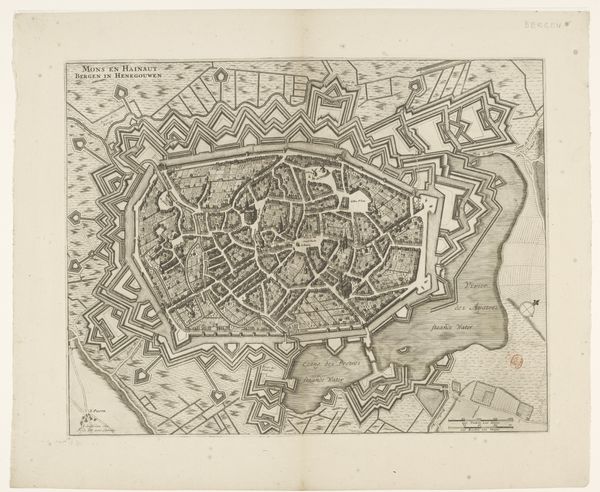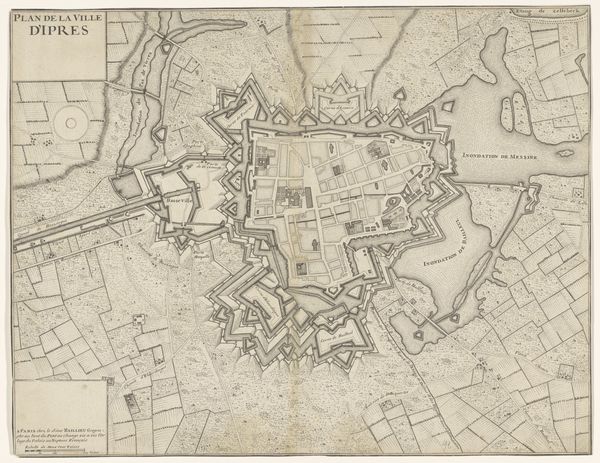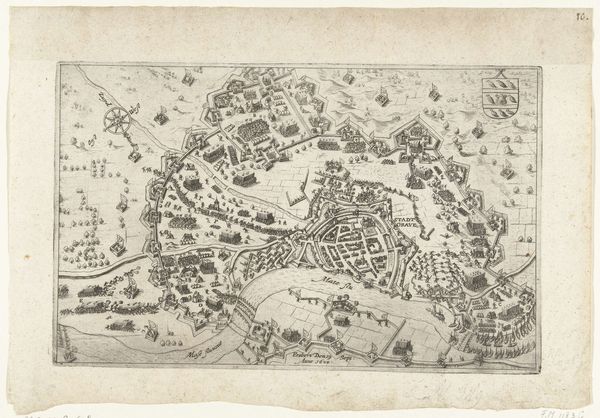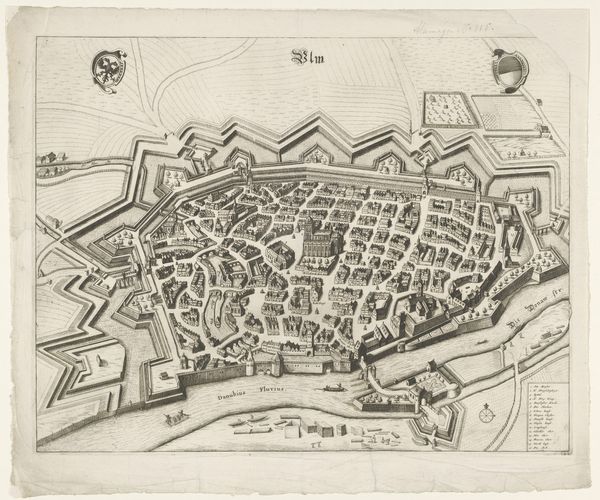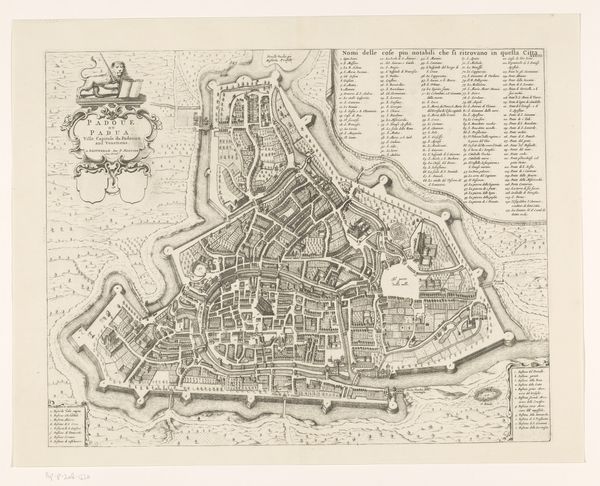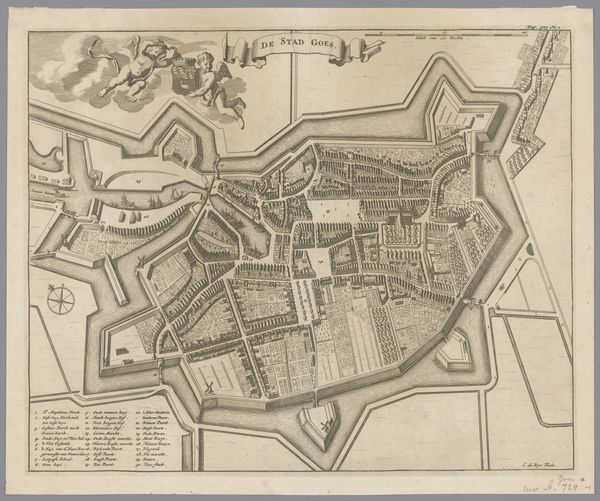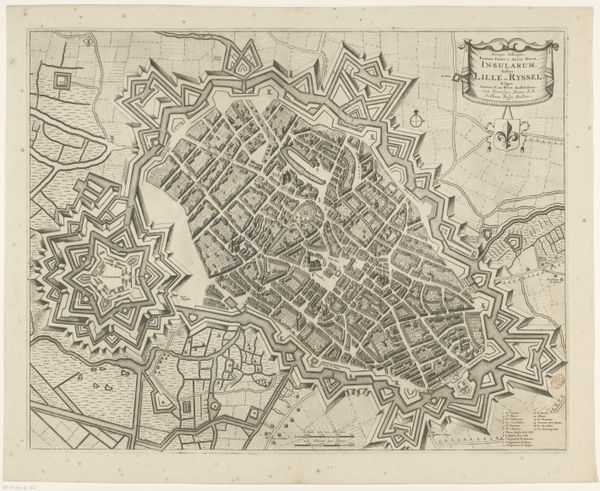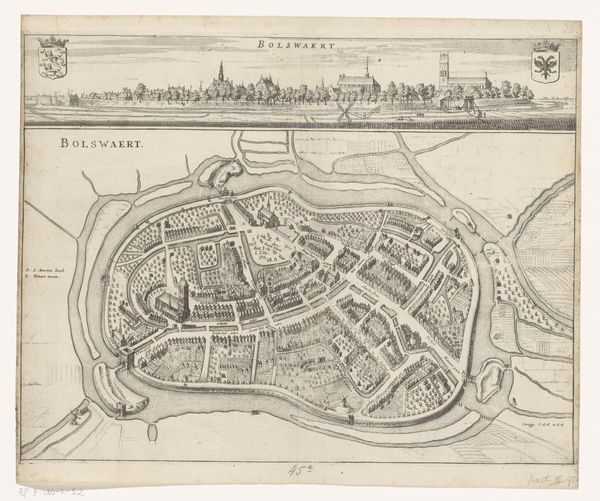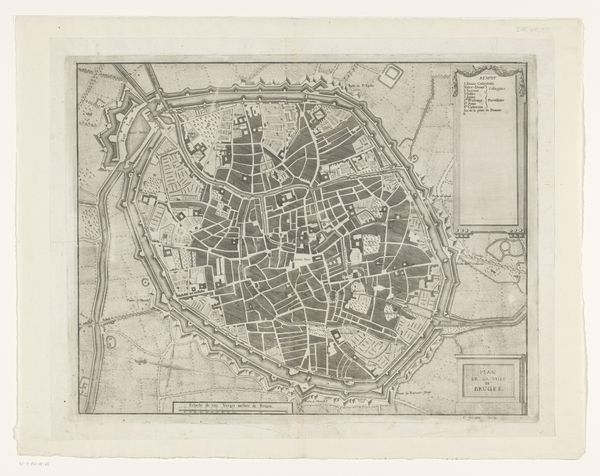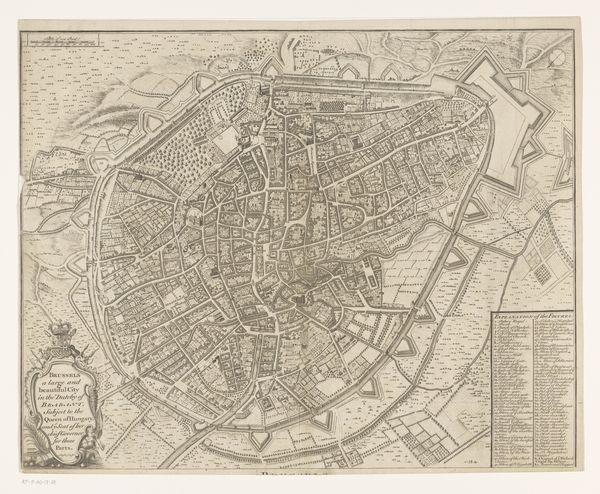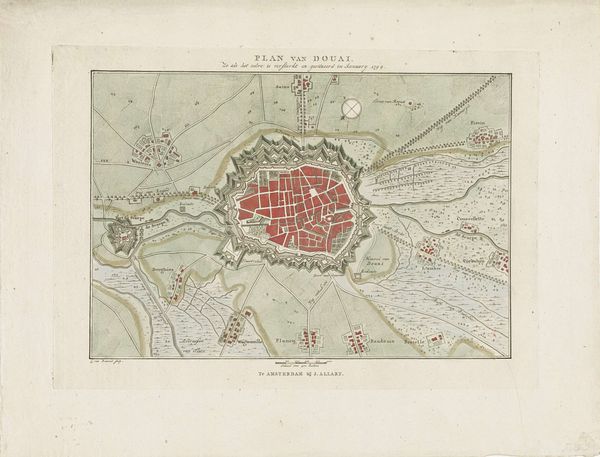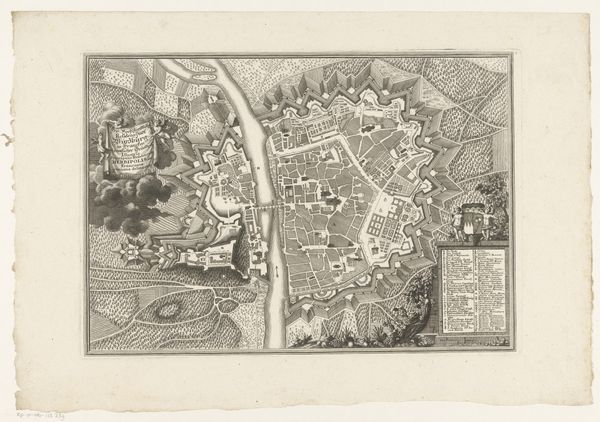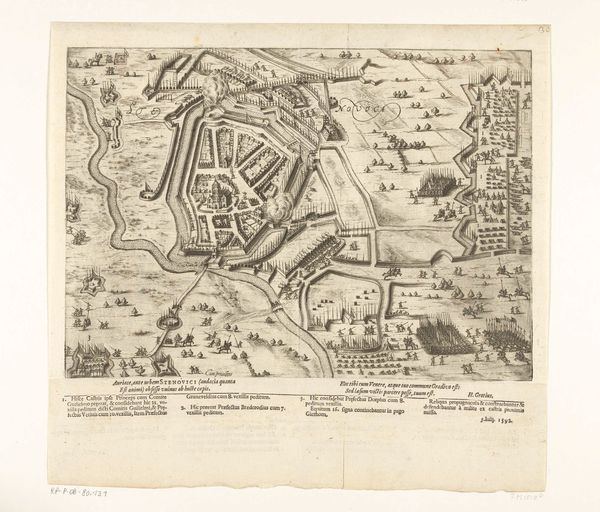
drawing, print, etching, ink
#
pen and ink
#
drawing
# print
#
etching
#
etching
#
ink
#
cityscape
Dimensions: 12 1/2 x 14 3/4 in. (31.75 x 37.47 cm) (image)13 3/8 x 15 1/2 in. (33.97 x 39.37 cm) (sight)19 15/16 x 22 1/8 x 3/4 in. (50.64 x 56.2 x 1.91 cm) (outer frame)
Copyright: Public Domain
Curator: At first glance, this work presents itself with an elegant intricacy, reminiscent of meticulous clockwork or a complex neural network rendered in earth tones. There’s a distinct visual hierarchy and ordered disposition, typical of cartographic representation. Editor: It feels… contained. I imagine Vienna in 1833 as a place acutely aware of its boundaries, both physically and perhaps socially. I wonder what stories hide in those densely packed streets, secrets pressed between the bricks like forgotten wildflowers. Curator: We are observing “Map of Vienna” produced in 1833 and held at the Minneapolis Institute of Art. It’s an amalgamation of pen and ink, etching and printmaking, demonstrating an impressive control over line and tone to convey spatial information. Notice how the etcher uses hatching to suggest buildings and other physical forms. Editor: I see that lovely ring of green embracing the older section, what appears to be an older wall perhaps, with that curious inner citadel outlined in what looks like faded blood-red. Like a stubborn ember of history, resisting the city's spread. The use of green here softens what would otherwise be a clinical, regimented representation. What purpose would these walls and borders serve in the lives of Viennese residents at this moment in history? Curator: The lines around the perimeter show Vienna as a fortress of sorts; this cartographic view showcases the radial street layout of a typical pre-industrial European City and may be seen through the lens of urban planning as an early concept for what would become modern metropolises and cityscapes in later eras. A functional tool as a record of built society. Editor: It makes me think about the act of mapping itself – how it’s not just about showing ‘what is’ but also about declaring ‘what matters.’ This isn't just geography, it is identity captured in ink, perhaps with the unfulfilled promise of objective presentation. Each decision made about what to include, how to stylize it… that's all inherently subjective, wouldn't you say? Curator: Subjectivity is inherent in the observer, while semiotics provides structure. Considering Vienna in its geopolitical context of the mid-19th century helps unpack this symbolic representation as something far beyond simple utility. I find beauty in that underlying rigor. Editor: And I find intrigue in all that remains unseen, or, perhaps just unsaid. Thank you for pointing me in the right direction today. Curator: Likewise.
Comments
No comments
Be the first to comment and join the conversation on the ultimate creative platform.
